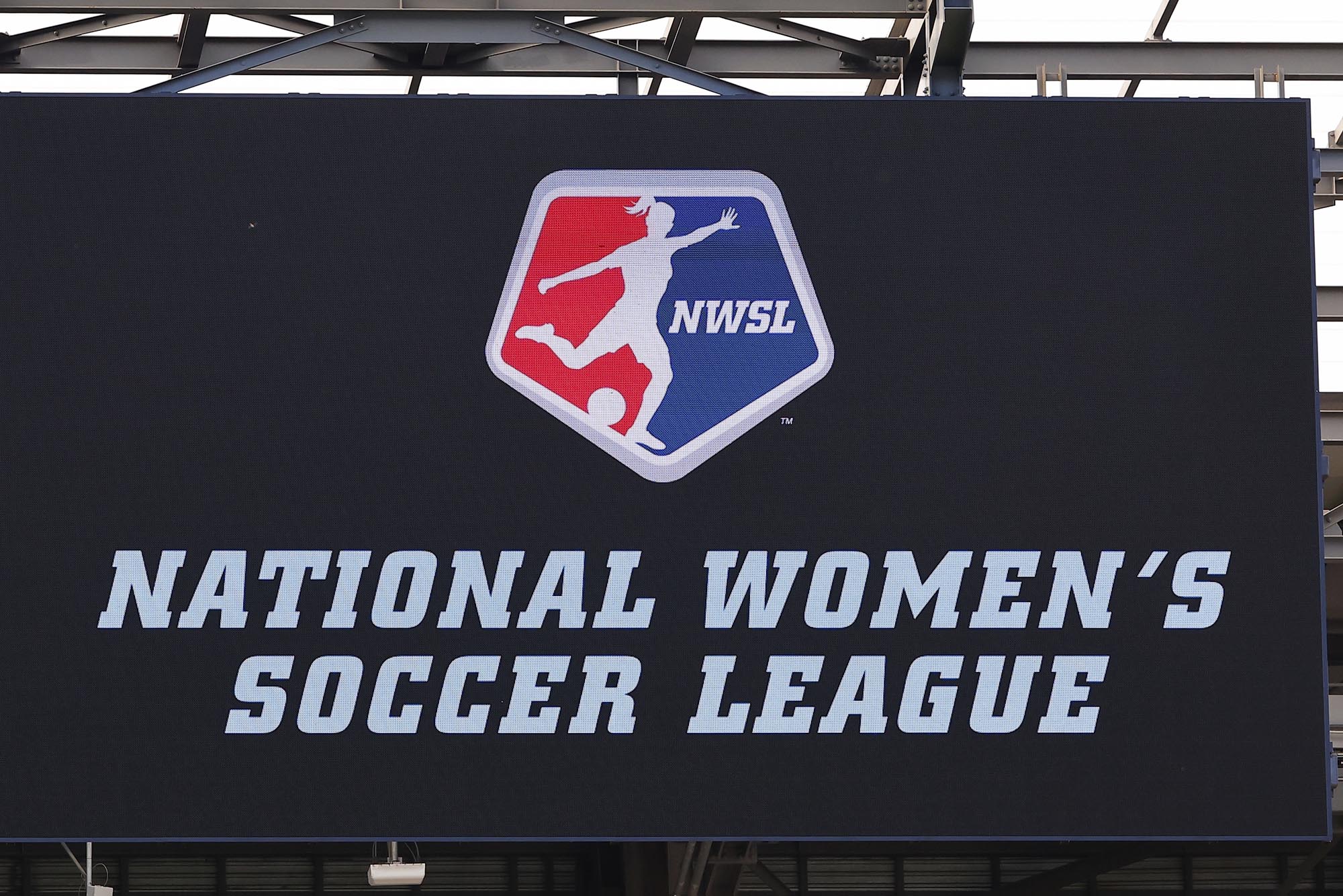“Too Many Balls” Had Too Little Foresight
BU advertising expert Doug Gould on what went wrong with that spectacularly disastrous ad campaign from Boston’s new professional women’s soccer club

Boston’s new National Women’s Soccer League team name was revealed in mid-October with a marketing campaign focused on the city’s men’s sports teams. The cheeky slogan: “There are too many balls in this town.” BU advertising expert Doug Gould analyzes the swift backlash. Photo by Rich Graessle/Icon Sportswire via AP Images
“Too Many Balls” Had Too Little Foresight
BU advertising expert Doug Gould on what went wrong with that spectacularly disastrous ad campaign from Boston’s new professional women’s soccer club
When the ownership group behind Boston’s new professional women’s soccer team announced the team’s name, BOS Nation Football Club, the public reaction was muted. But when it rolled out the marketing campaign to support that name, well, that was a kick in the—shins.
“Boston loves its balls,” announced a cheeky video accompanying the new club’s name. The video cut between quick shots of some of Boston’s most notable male athletes and trophy-winning men’s teams, with a narrator saying: “There are too many balls in this town.”
“This is our city, our new team, our new nation,” it concludes. “BOS Nation…no balls necessary.”
The backlash was swift.
Boston’s new Nation Women’s Soccer League team, BOS Nation FC, ditches ‘Too Many Balls’ promotional campaign after backlash https://t.co/A5vC5MDGXJ
— The Boston Globe (@BostonGlobe) October 16, 2024
Many people—on social media, news articles, and in comment sections—were critical of the video’s notable absence of one key demographic: existing professional women’s sports teams in the city. Some, including Quinn, a player on Seattle Reign FC and the first openly transgender and nonbinary athlete in the National Women’s Soccer League (NWSL), said it was transphobic. Meg Linehan, who covers women’s soccer for The Athletic, called it “the worst NWSL launch I’ve ever seen in the history of the league.” Sam Mewis, a Massachusetts native, former US Women’s National Team player, and World Cup winner, also weighed in.
“Women’s sports, and women’s sports fans have our own table now, and we don’t need to center men’s sports in our conversations anymore,” she said on a recent podcast.
The campaign, which was splashed across billboards and T-shirts, and even had its own dedicated website, was retracted by the franchise less than a day after it appeared. Billboards came down, T-shirts disappeared from the team’s online merchandise store, and the website (TooManyBalls.com) vanished. In a statement posted online, the team’s ownership group apologized, saying that its attempt to make a “bold and buzzworthy brand launch” fell short.
To the casual observer, it’s hard to understand how the team—and the creative agency it hired—let fly what seems like such an obvious blunder. But Doug Gould, a professor of the practice, advertising, at Boston University’s College of Communication, sees it as an attempt to cut through the noise that was probably just not fully baked.
“We’re in a business where we’re trying to cut through clutter, and that’s harder and harder with the platforms that exist today,” says Gould, who has worked in ad agencies and for clients large, small, and in-between for three-plus decades as both an art and a creative director.
“People are exposed to more messaging than ever. So it’s always been the goal of great creatives and great agencies and great clients and great brands to do work that gets noticed and remembered,” he says. “And when you do that, when you push the boundaries, sometimes you step over an edge.”
This one, in particular, blew up in spectacular fashion. The ad campaign—and its various backlashes and retractions—was covered by such national news outlets as the Wall Street Journal, USA Today, ESPN, and the Washington Post.
From his vantage point, Gould identifies two big flaws with the campaign. The first was that it was just too easy. “It’s locker-room stuff,” he says. “If my creative team had brought this to me, I’d say, ‘This feels like the first bar to get over. Let’s intellectualize this a little bit more.’”
There’s another inherent problem, he says: logic. In his work and with his students, he advises that it’s not enough to come up with an idea that’s wild and different. “It has to be rooted in some logic,” he says. “Even if advertising is the land of hyperbole, that hyperbole has to be connected to a logical thread so consumers can connect the dots. So, when you say, ‘There are too many balls in this town,’ but you’re advertising a soccer team, I’m left with the fact that soccer uses a ball, too. How does that fit?”
From us to you. pic.twitter.com/ASHFHltb5n
— NWSL Boston (@NWSLBoston) October 16, 2024
Gould, who was not involved with the BOS Nation campaign, says he has been in the room when campaigns “go sideways.”
“You do not want to be in that tornado,” he says.
And while there’s an old adage that all publicity is good publicity, Gould is not so sure that holds true.
“The end result is that they actually got more notice than a smaller campaign would have gotten them, in terms of people being aware that they exist as an entity,” he says. “There’s no question that that happened—I wouldn’t say that’s a good thing. But it did earn them a lot more eyeballs and ears than they ever would have gotten with a small regional campaign for a new soccer team.”
There’s nothing wrong with pushing the envelope, Gould says, and he actually encourages it. “You can make an ad that won’t upset anyone, but that ad also isn’t going to be noticed by anyone. When you’re making a splash, you have to have a plan.”
That’s true, he says, whether it’s merely risky—or risqué.

Comments & Discussion
Boston University moderates comments to facilitate an informed, substantive, civil conversation. Abusive, profane, self-promotional, misleading, incoherent or off-topic comments will be rejected. Moderators are staffed during regular business hours (EST) and can only accept comments written in English. Statistics or facts must include a citation or a link to the citation.